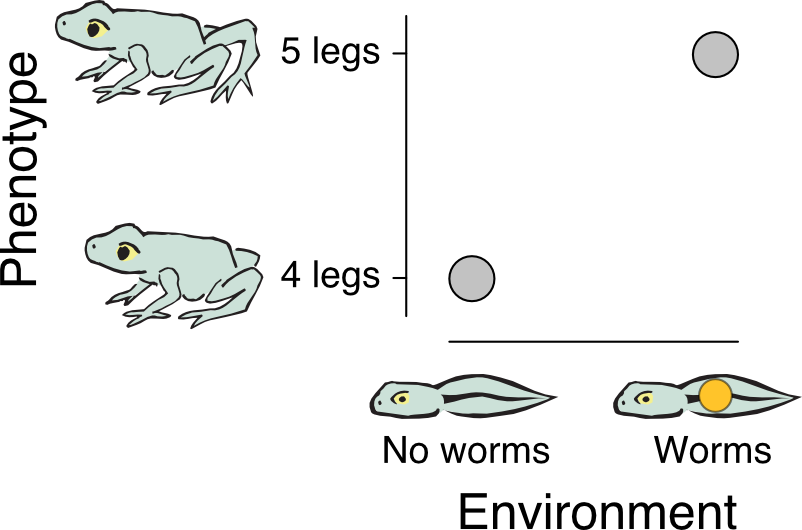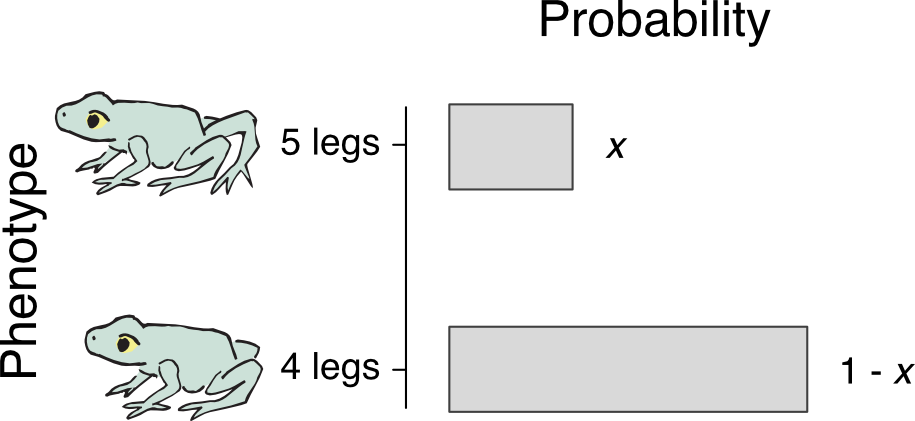Appendix B Study Designs
Doing science means collecting data to test hypotheses. Imagine that you are playing with a FrogPond simulation and have found a higher frequency of deformed frogs in Top Pond than in Bottom Pond. This appendix explores a few of the strategies you might use to test the hypothesis that the deformities are caused by parasitic worms.
This hypothesis—that the variation in number of legs is environmental—is described in Chapter 3 — Kinds of Variation. If this hypothesis is correct, data on a sample of frogs might look like this:

Keep in mind, however, that there are other possibilities—also described in Chapter 3.
Under the hypothesis that the variation in number of legs is genetic, data on a sample of frogs might look like this:

Under the hypothesis that variation in leg number is the result of genotype-by-environment interaction, data on a sample of frogs might look like this:

And, finally, under the hypothesis that the variation in leg number is the result of random chance, data on a sample of frogs might look like this:
